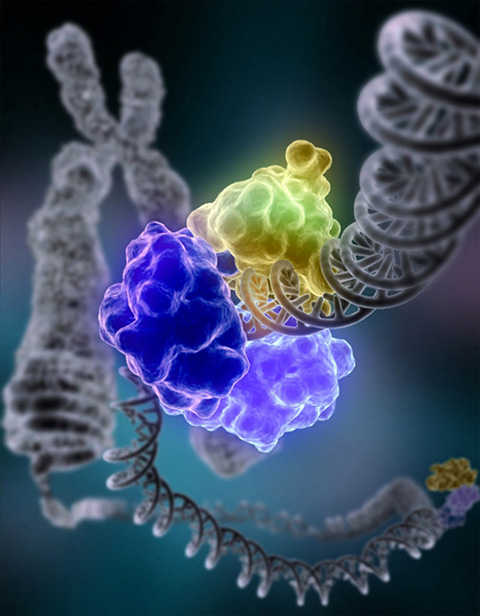Scientists identify pan-cancer biomarkers
Genomics and transcriptomics have successfully identified many therapeutic targets for cancer. However, changes in protein abundances and their chemical modifications can also drive tumor progression. To consider this additional dimension, Guo-sheng Hu, Zao-zao Zheng, Yao-hui He, Du-chuang Wang and colleagues at Xiamen University analyzed RNA and protein data from thousands of patients with 13 cancer types. They published their findings in Molecular & Cellular Proteomics. Using bioinformatics tools, they identified upregulated and downregulated genes specific to each cancer type as well as genes common to most types analyzed.

The team discovered that tissue-specific genes were downregulated at both RNA and protein levels in all cancer types, indicating a loss of tissue identity. They showed that many genes involved in messenger RNA splicing, interferon pathway, fatty acid metabolism, and complement coagulation cascade, were dysregulated across several cancer types. The authors also found that ADH1B, the alcohol dehydrogenase that converts ethanol to acetaldehyde, was significantly downregulated in all cancer types. Conversely, the ribonucleotide regulatory subunit RRM2 was overexpressed. These proteins are examples of potential pan-cancer biomarkers, which can be used to discern cancer tissues from normal cells and potentially inform novel therapeutic strategies.
Effective cancer treatment also requires knowledge of the tumor’s stage of progression. To identify biomarkers for each tumor stage, the team analyzed how the cancer proteome changed throughout tumor progression. They used these findings to build models for tumor stage classification of several cancer types based on these biomarkers. They further constructed prognostic risk stratification models for corresponding cancer types based on dysregulated genes. They found that these models, when combined with the tumor-node-metastasis classification system, predicted cancer patient prognosis more accurately than either approach individually.
Protein-based approaches like these could be the key to better understanding cancer mechanisms and developing better treatments. Inhibitor drugs targeting RRM2 and other differentially expressed proteins identified in this study could be used to treat a range of cancer types and will be investigated further in future studies.
Enjoy reading ASBMB Today?
Become a member to receive the print edition four times a year and the digital edition monthly.
Learn moreGet the latest from ASBMB Today
Enter your email address, and we’ll send you a weekly email with recent articles, interviews and more.
Latest in Science
Science highlights or most popular articles

Building the blueprint to block HIV
Wesley Sundquist will present his work on the HIV capsid and revolutionary drug, Lenacapavir, at the ASBMB Annual Meeting, March 7–10, in Maryland.

Gut microbes hijack cancer pathway in high-fat diets
Researchers at the Feinstein Institutes for Medical Research found that a high-fat diet increases ammonia-producing bacteria in the gut microbiome of mice, which in turn disrupts TGF-β signaling and promotes colorectal cancer.

Mapping fentanyl’s cellular footprint
Using a new imaging method, researchers at State University of New York at Buffalo traced fentanyl’s effects inside brain immune cells, revealing how the drug alters lipid droplets, pointing to new paths for addiction diagnostics.

Designing life’s building blocks with AI
Tanja Kortemme, a professor at the University of California, San Francisco, will discuss her research using computational biology to engineer proteins at the 2026 ASBMB Annual Meeting.

Cholesterol as a novel biomarker for Fragile X syndrome
Researchers in Quebec identified lower levels of a brain cholesterol metabolite, 24-hydroxycholesterol, in patients with fragile X syndrome, a finding that could provide a simple blood-based biomarker for understanding and managing the condition.

How lipid metabolism shapes sperm development
Researchers at Hokkaido University identify the enzyme behind a key lipid in sperm development. The findings reveal how seminolipids shape sperm formation and may inform future diagnostics and treatments for male infertility.

